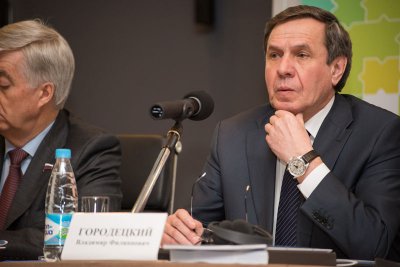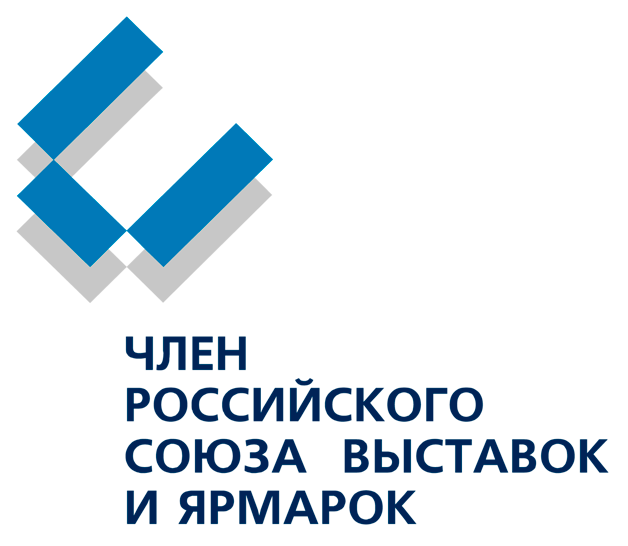The Novosibirsk Agglomeration Can Be One of the Pilot Projects Implemented by the Russian Federation Ministry of Regional Development

The Novosibirsk Region plans to take part in the selection conducted by the Russian Federation Ministry of Regional Development. The results of these selection will be used to single out pilot projects of developing urban agglomerations in Russia. Vladimir Gorodetsky temporarily acting as the Governor of the Novosibirsk Region spoke about this at the All-Russian Conference on Urban Agglomeration Development held at the Novosibirsk Expocentre.
It is not by accident that Novosibirsk was chosen to host the first agglomeration development conference. The Novosibirsk agglomeration, which includes 12 municipal entities, is among the five largest agglomerations of Russia. It was formed naturally around the administrative centre of the Novosibirsk Region at the territory of over 36 thousand km2, which became home for more than 2 million people.
‘It is great honor for us to have Russian and international experts in the sphere of agglomeration development here in the Novosibirsk Region. This is the first platform for discussing these important issues. We’ve created maximum comfortable environment for experience sharing. I’m sure that every participant of the conference will learn something useful. Experience sharing will allow us to expand our outlook on structures contained in an agglomeration. The agglomeration in our region was actually formed in a natural way. Novosibirsk with its 1.5 million residents is the core of this agglomeration. We already have competitive advantages – scientific and research centres and, most importantly, - huge potential of our people. This is a naturally formed resource that must bring up the most positive effects. And today we set the task of finding ways to use this huge potential. We are not very experienced in this sphere, though we already have a few well-established techniques. And we are ready to share our experience with the others. We’ve arranged the program of this conference in such a way that would allow touching upon all possible ways of agglomeration development during panel discussions. It is important for us to use rich international experience related to this topic. And we are ready to learn a lot from you’, noted Vladimir Gorodetsky.
The Novosibirsk agglomeration project includes the development of growth areas, such as ‘Aerocity’ (‘Tolmachevo’ Airport, the Novosibirsk Expocentre International Exhibition Complex, the Town of Ob), ‘Siberian Science Town’ (Akademgorodok, (Academic Town), Krasnoobsk, Koltsovo), ‘Transport and Logistics Complex’, ‘Industrial and Construction Complex’ (Berdsk, Iskitim) etc. Such division is conditioned by a high scientific and educational potential of the territory with departments of three academies of sciences and a few dozens of higher education institutions, advantageous economic and geographic location at the intersection of three key highways, and the diversified structure of regional economy.
According to Vice-Governor of the Novosibirsk Region Anatoly Sobolev, the main effect that the development of the Novosibirsk agglomeration will have on the region is the formation of a strong innovative centre in the eastern part of Russia.
Regional authorities have been actively working on the Novosibirsk agglomeration development since 2011. The Russian Federation Deputy Minister of Regional Development Valery Gayevsky stated that the region had all chances to get on the list of pilot projects. He also emphasized that the Novosibirsk Region is currently the only area, where the activities performed for creating an agglomeration were personally supervised by the Vice-Governor.
According to the data provided by the Ministry of Regional Development, ¾ of Russia’s population live in various towns and cities: large cities with over one million residents, big industrial hubs, and small towns. According to the UN estimates, the total amount of people living in urban areas will have doubled by 2050, and by 2015, there will have been 900 cities with over one million residents in the world. Thus, the problem of creating a new city type – a person-oriented city is getting more and more relevant.
As Head of the UN-Habitat Program in the Russian Federation Tatyana Khabarova noted, ‘evolution of city form’, that is expansion, ‘sprawling’ is seen everywhere in the world today. If we don’t take this process under control or if we stop developing an appropriate infrastructure, we are going to face a huge amount of problems, first of all, related to transport communications, uncontrollable migration, the worsening of ecological situation etc. Therefore, in experts’ opinion, the formation and development of agglomerations is not just a fashionable trend but a life necessity.
As Valery Gayevsky told us, last September the Ministry of Regional Development created a joint working Group for urban agglomeration development. This group has worked out a plan of primary activities aimed at developing agglomerations in Russia – a so-called roadmap. According to this plan, the launch of 5-10 pilot projects devoted to developing various types of agglomerations related to different hierarchic levels is scheduled for 2014-2015.
Drawing up a list of pilot projects will allow summing up the experience of managing agglomeration development in Russia, pointing out management peculiarities for different types of agglomerations, working out mechanisms and models for managing agglomeration development, defining limitations and problems that may affect the process and results of implementing the pilot projects, and preparing suggestions that would help eliminate the limitations and optimize the process of developing urban agglomerations in Russia in compliance with the Law.
Reference information: Agglomeration is a group of municipal entities, united into a complex, dynamically developing system with intensive transport, infrastructural, social, economic connections, and joint use of available territories and development resources.









